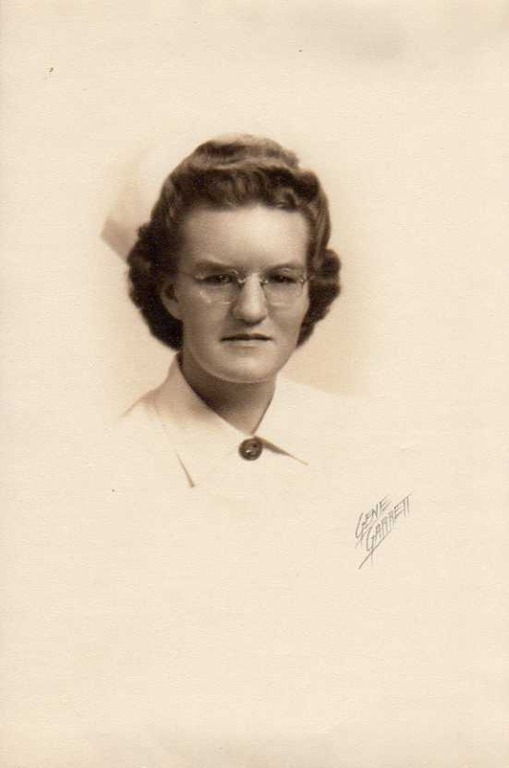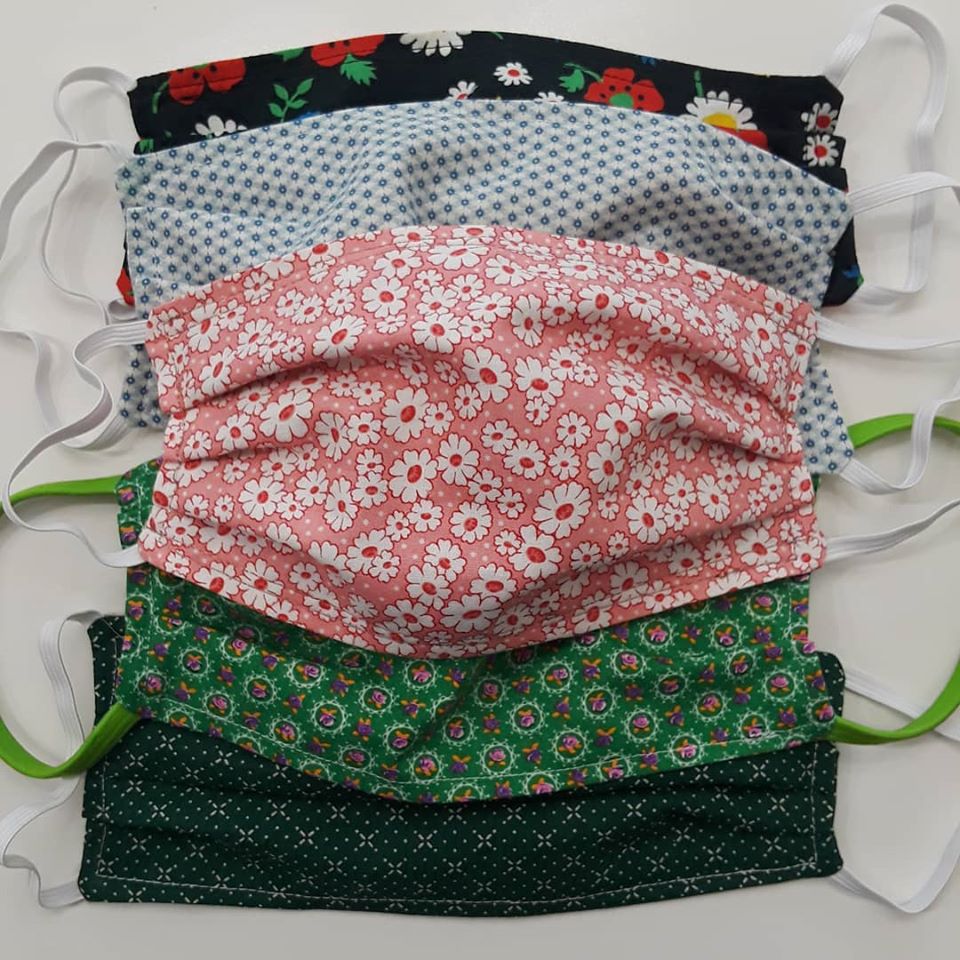Welcome to the most important Fashion Friday post that I have ever written. How To Sew Hospital Face Masks.
It is important to note that cloth fabric masks are not N95 masks. Cloth masks just reduce but don’t eliminate the odds of inhaling large, infectious particles. It is very important for the general public to still shelter in place, WASH THEIR HANDS and follow CDC guidelines.
Important Information
It is extremely important that hospital workers wear an N95 compliant mask when treating patients. But there is sadly a shortage of masks for patients.
There are CDC protocols that you can find on their website that if all other supplies are not available. Then handmade masks, that meet certain criteria, are acceptable.
Prior to modern disposable masks, washable fabric masks were standard use for hospitals. The masks can be sterilized by washing in hot water and soap after each wearing.

In addition to hospital care workers, these masks can benefit first responders, food delivery service workers and more.
Those with compromised immunity can also benefit from wearing a mask.
How To Sew Hospital Face Masks
The Supplies
- Use tightly-woven cotton fabric for the front of the mask. Cut two 9″ x 6″ rectangles for an adult max or 7.5″ x 5″ for a child.
- Cotton flannel is softer for the interior of the mask if you have it.
- two pieces of 1/8″ or 1/4″ flat elastic cut to 6 or 7 inches long.
- thread
Keep in mind to use a variety of prints and colors as both women and men in a variety of roles may wear these masks.
This LINK is an excellent article on what the best materials are when making a mask.
Here is the downloadable PDF of instructions that hospitals are linking to.
How To Sew Hospital Face Masks
Written Instructions
I have written the directions out here because some individuals could not open the PDF above. There were also some confusing spelling errors.
- Cut two 9″ x 6″ rectangles of fabric for an adult mask or 7.5″ x 5″ for a child-size mask.
- Take your two rectangles of fabric and place the right sides of the fabric (the fabric that will be seen on the outside) together. Pin in place.
- On the right-hand side, starting a bit off-center from the top of a long edge of fabric begin to sew (starting with a backstitch to secure) and continue sewing to the first corner, STOP.
- Place one end of the elastic in the corner between the two fabrics. The elastic will, in essence, be sandwiched between the two fabrics. The rest of the elastic will face toward the center of the fabric rectangle.
- Sew a few stitches back and forth to secure and then continue sewing down the one short side of the fabric until you get to the corner. STOP.
- Bring the other end of the elastic to this corner in between the two fabrics. Again, the elastic will, in essence, be sandwiched between the two fabrics.
- Sew a few stitches back and forth to secure and then continue sewing down the long side of the fabric to the corner. STOP.
- Add the second piece of elastic to this corner between the two fabrics. The elastic will, in essence, be sandwiched between the two fabrics. The rest of the elastic will face toward the center of the fabric rectangle.
- Sew a few stitches back and forth to secure and then continue sewing down the short side of the fabric to the corner. STOP.
- Bring the other end of the elastic to this corner between the two fabrics. Again, the elastic will, in essence, be sandwiched between the two fabrics.
- Sew a few stitches back and forth to secure and then continue sewing the long side of the fabric for just an inch or two. Stop a bit off-center. Backstitch to secure. Cut thread.
- You should have an unstitched opening about 1.5″ to 2″ across the top so you can turn the fabric rectangle inside out.
- Turn the fabric inside out. Check to make sure all seams are secure. Press flat with a hot iron.
- Pin three tucks on each side of the short side of the fabric of the mask. MAKE SURE the tucks are in the same direction.
- Sew around the mask 1-2 times to secure the tucks.
Videos For Visual Learners
If the instructions are still unclear or you are a visual learner like myself this is just one of several videos on Youtube.
Mask With Filter Pocket
This is a good video if you want a pocket to hold a filter on the facemasks. But be aware that many hospitals do not have filters.
Please know I am only providing this free information on how to make the masks. You the reader and/or maker assume any and all responsibility for your own health.
I will not be held liable by any individual wearing a mask that they made using the information provided here.
It is the reader’s and/or maker’s responsibility to know that cloth masks just reduce but don’t eliminate the odds of inhaling large, infectious particles. I must stress that it is very important for the general public to still shelter in place, WASH THEIR HANDS and follow CDC guidelines.
It is the reader’s and/or maker’s responsibility to read the CDC Guidelines, understand them and incorporate them.
I was taught to be helpful and good by my Grandma Jingles.
It’s a shame that people are unkind and words like “I will not be held liable”must be said.

I will continue to share uplifting positive content on my Facebook page and Instagram posts and stories.
Please say a prayer for me that our household remains healthy so that my sewing fingers continue to fly.
Laura


Love the sewing talent you have and how you use it! Stay safe and keep the Faith!!
Sew Laura Sew! You have one of the kindest, most generous hearts.
You are SO KIND to sew mask!!! If I could sew or had sewing machine I would. PRAYING we all stay healthy and safe.
You are wonderful. This is terrific. Absolutely terrific.
Please take care, Laura. I’m worried about Eric and hope he will be OK and that you and your family will get through this. We hope the same thing here.
Grandma Jingles would be so proud of you.
This site has some good information on how well various materials protect you: https://smartairfilters.com/en/blog/best-materials-make-diy-face-mask-virus/ While obviously not medical grade, cotton did very well. They also suggested a metal strip on the nose side (from twist ties, or pipe cleaners) so it could be fitter closer to the face. I hope so many sew-ers do this that we have millions in excess for allergy sufferers, etc. Thanks for the timely post!
I don’t understand this: 2.Sew the elastic with the know out into the corner……….What is the know????????
I am an experienced seamstress
Hi Pat I have posted my own written directions and you were correct the official PDF had spelling errors.
So simple and so needed
Thanks for the two videos… much easier for me to understand then just reading the directions.
Hi Laura,
I can sew these…no sweat! However, do you know where I would send them when completed?
Thanks so much!
Renee Robinson
San Francisco Bay Area
Hi Renee,
You can google “California hospitals that need facemasks” and it should direct you to contact a hospital director to collect them. Some hospitals have a different kind of mask design so just follow the guidelines of what they give you.
There is also a few “Making Masks” group on Facebook that is working on getting a directory together. You can use the Facebook search bar to find them.
Stay healthy!
Laura
Will do.! Thanks so much for the information! Grateful to be of help while, “Sheltering in Place” until
April 7th.
Renee
San Francisco Bay Area
With the present Pandemic covering our globe at the present time, is there a fabric which will prevent the Covid-19 virus from getting through?
I have seen in other patterns, that using a middle layer of t-shirt cotton, improves the ability to filter more!
Also while trying to find materials to make these that I had in my stash….I came across using hair ponytail elastics being used for the elastic! More work in sewing the elastic flap, but saves time in the long run
Laura, this is such a wonderful idea and I know your tutorial will help many people make masks for their own doctors offices and families to use. It is a shame we have to add the disclosure things to prevent lawsuits. Crazy but people take advantage and look to blame for everything, even in these difficult times.
I’d love to share your post if you will let me on my Sunday Sentiments this coming weekend, if you are okay with it? I’ll put in about the disclosure. 🙂
Prayers coming,
Barb 🙂